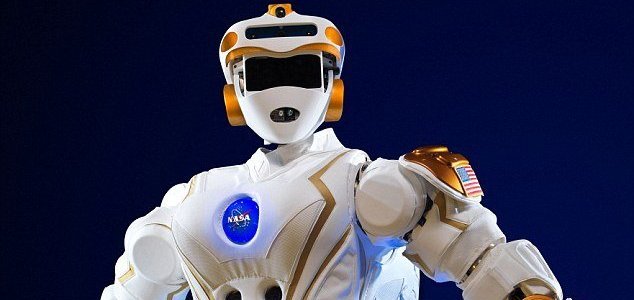Science & Technology
June 18, 2017 · 11 comments
11 comments

Is this the future of Mars exploration ? Image Credit: NASA / Bill Stafford
Equipped with 200 sensors in its head, shoulders, abdomen and legs, it can effectively pick out obstacles and uneven terrain so that it can move forward without falling over anything.
On its website, NASA describes Valkyrie as "a robust, rugged, entirely electric humanoid robot capable of operating in degraded or damaged human-engineered environments."
The test footage, which was uploaded a few days ago, can be viewed below.
Source: Sputnik International | Comments (11)
NASA reveals new footage of its Valkyrie robot
By T.K. RandallJune 18, 2017 ·
 11 comments
11 comments
Is this the future of Mars exploration ? Image Credit: NASA / Bill Stafford
The futuristic humanoid contraption is being designed to operate autonomously on the surface of Mars.
Footage of the robot in action, which was recorded during a recent test at the Johnson Space Center, shows Valkryie effortlessly stepping across a room filled with concrete blocks.Equipped with 200 sensors in its head, shoulders, abdomen and legs, it can effectively pick out obstacles and uneven terrain so that it can move forward without falling over anything.
On its website, NASA describes Valkyrie as "a robust, rugged, entirely electric humanoid robot capable of operating in degraded or damaged human-engineered environments."
The test footage, which was uploaded a few days ago, can be viewed below.
Source: Sputnik International | Comments (11)

The Unexplained Mysteries
Book of Weird News
AVAILABLE NOW
Take a walk on the weird side with this compilation of some of the weirdest stories ever to grace the pages of a newspaper.
Click here to learn more

Support us on Patreon
BONUS CONTENTFor less than the cost of a cup of coffee, you can gain access to a wide range of exclusive perks including our popular 'Lost Ghost Stories' series.
Click here to learn more
Spirituality, Religion and Beliefs
UK and Europe
United States and the Americas
Ghosts, Hauntings and The Paranormal
Total Posts: 7,607,247 Topics: 316,434 Members: 201,851
Not a member yet ? Click here to join - registration is free and only takes a moment!
Not a member yet ? Click here to join - registration is free and only takes a moment!



























Please Login or Register to post a comment.